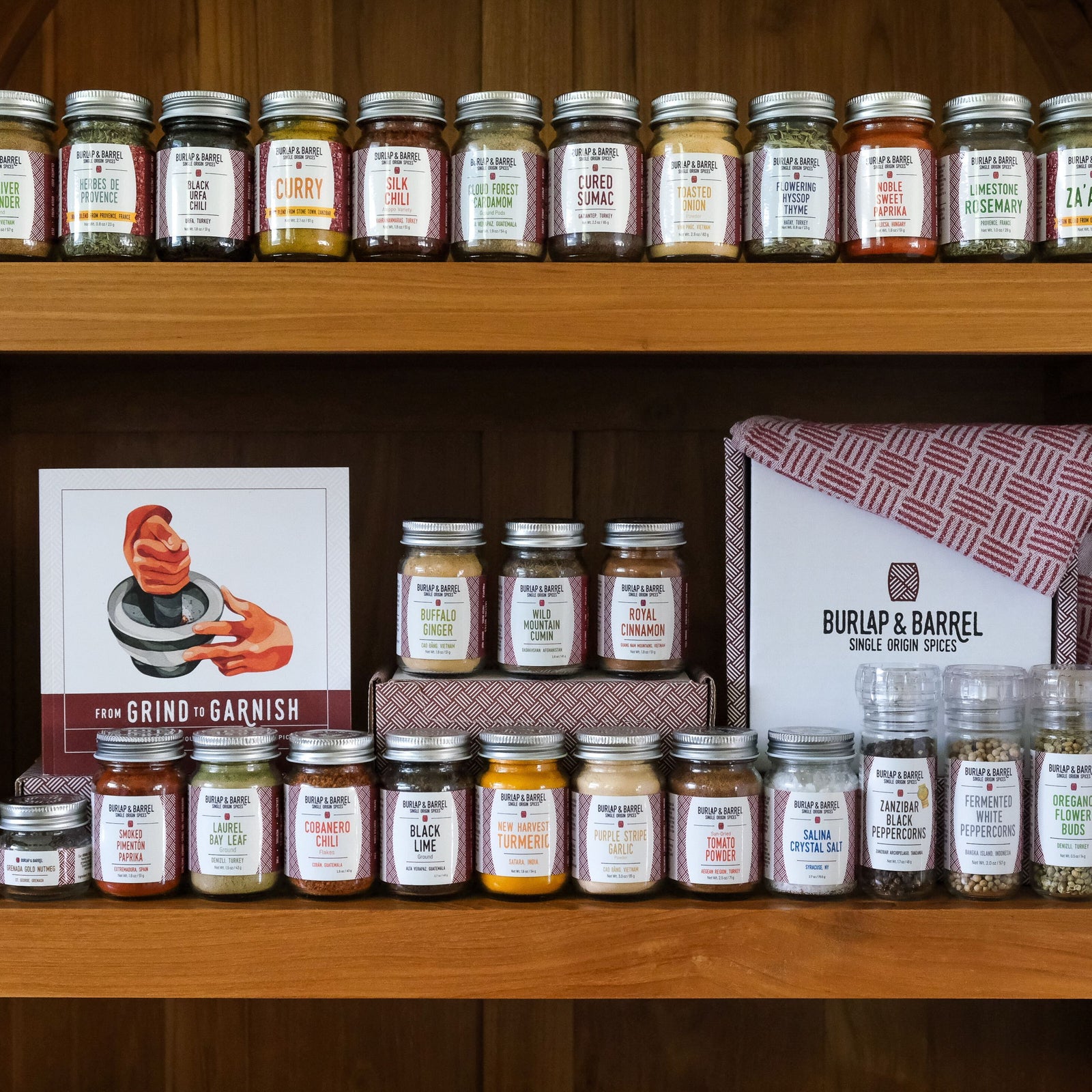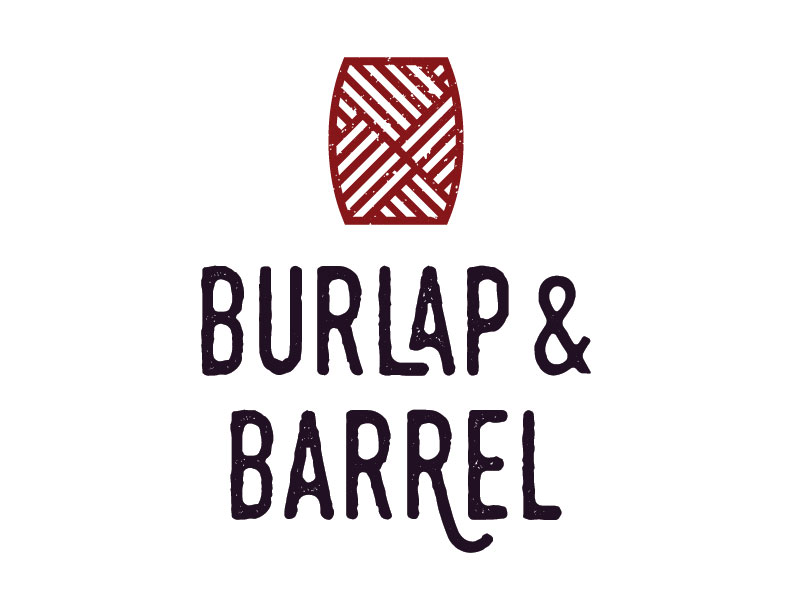Rustic Charm: Burlap & Barrel Spices - Shop Now!
These materials represent a tangible connection to the origins of the spice trade. One denotes a coarse, woven fabric often used for transporting goods, while the other refers to a cylindrical container traditionally employed for aging and storage. Their association evokes images of spices and flavors journeying across continents, preserved and protected for distribution.
The practices suggested by these terms are pivotal in maintaining the quality and integrity of spices. The fabric provides a breathable yet protective barrier against external elements during transit, while the container allows for nuanced development of flavor profiles during maturation. Historically, reliance on such methods ensured the accessibility of valuable commodities to distant markets.
The following discussion will delve into the sourcing, processing, and application of various spices, highlighting the modern techniques that build upon these traditional foundations to deliver exceptional culinary experiences.
- Alyssa Grenier Obituary South Windsor Ct Alyssa
- Robert Hernandez Bio Age Wiki Facts And
- Young Thug S Children Know Them All
- Antron Brown Wife Billie Jo Brown Married
- Does Phaedra Parks Own A Funeral Home
Frequently Asked Questions
This section addresses common inquiries regarding the procurement, processing, and utilization of spices sourced through direct trade practices.
Question 1: What is the primary advantage of sourcing spices directly from producers?
Direct sourcing establishes a transparent supply chain, ensuring fair compensation for farmers and promoting sustainable agricultural practices. It also fosters a closer relationship between consumers and producers, allowing for greater traceability and quality control.
- Who Is Austin Hahn Indiana Man Apprehended
- Jordan Hill Net Worth Age Height Bio
- Tom Sandoval Parents Meet Anthony Sandoval And
- Who Is Santhivila Dinesh Wiki Age Bio
- Who Is Ciara Bravo Dating Now Past
Question 2: How are the spices guaranteed to be of high quality?
Stringent quality control measures are implemented at every stage of the process, from cultivation and harvesting to processing and packaging. This includes rigorous testing for purity, potency, and absence of contaminants.
Question 3: Are the spices certified organic or fair trade?
While not all spices are certified, there is a commitment to working with producers who employ sustainable and ethical farming methods. Specific certifications vary depending on the producer and the spice.
Question 4: What is the shelf life of the spices?
Spices retain optimal flavor and aroma for approximately 1-2 years when stored properly in airtight containers, away from direct sunlight and heat. Ground spices generally have a shorter shelf life than whole spices.
Question 5: How does the direct trade model impact local communities?
The model empowers local communities by providing stable income streams, promoting economic development, and supporting sustainable agricultural practices that protect the environment.
Question 6: Where can the spices be purchased?
The spices are available for purchase through the company's website and select retail partners.
In conclusion, a commitment to direct sourcing, rigorous quality control, and sustainable practices ensures access to exceptional spices while fostering positive social and environmental impact.
The subsequent section will explore innovative culinary applications of these spices, providing insights into enhancing flavor profiles and creating memorable dining experiences.
Culinary Application Strategies
This section provides practical guidance on leveraging spices for optimal flavor enhancement in diverse culinary applications. Focus remains on maximizing impact and achieving nuanced results.
Tip 1: Strategic Bloom Enhancement: Heat whole spices gently in oil before adding other ingredients. This process, known as "blooming," releases aromatic compounds, infusing the oil with flavor and distributing it throughout the dish more effectively. Example: Toast cumin seeds in oil before adding onions for a deeper, more complex flavor base in curries.
Tip 2: Ground Spice Incorporation Timing: Add ground spices towards the end of the cooking process, particularly when preparing dishes with longer cooking times. This prevents the spices from burning or becoming bitter. Example: Add ground coriander and turmeric to a stew during the final 15 minutes of simmering.
Tip 3: Strategic Spice Pairing: Understanding the complementary nature of various spices allows for the creation of balanced and harmonious flavor profiles. Consider the origins and traditional uses of spices for inspiration. Example: Combine cinnamon, clove, and nutmeg in baked goods for a classic warm and inviting flavor.
Tip 4: Fresh Spice Grinding: Whole spices retain their flavor potency for a longer duration than pre-ground varieties. Invest in a spice grinder or mortar and pestle for maximum flavor extraction. Example: Grind whole peppercorns immediately before use to enhance the aroma and intensity of pepper.
Tip 5: Spice Storage Protocol: Store spices in airtight containers, away from direct sunlight, heat, and moisture. This preserves their essential oils and prevents flavor degradation. Example: Utilize dark glass jars with tight-fitting lids to store spices in a cool, dry pantry.
Tip 6: Infused Oil Creation: Create infused oils by gently heating spices in oil over low heat, allowing the flavors to meld. These oils can then be used as finishing oils or in cooking. Example: Infuse olive oil with chili flakes and garlic for a spicy and flavorful drizzle.
These strategies emphasize the importance of mindful spice application to elevate culinary creations. Precise techniques and proper storage are crucial for maximizing flavor and aroma potential.
The subsequent conclusion will summarize the key takeaways from this exploration and offer final considerations.
Conclusion
This exploration has elucidated the importance of materials and methods represented by burlap and barrel in the context of spice sourcing and utilization. From their historical role in preservation and transport to their modern-day association with direct trade practices, these concepts underscore a commitment to quality, authenticity, and sustainable sourcing within the spice industry. The discussion has highlighted the benefits of direct sourcing, emphasized the crucial role of quality control, and detailed practical strategies for maximizing flavor potential through informed culinary applications.
The principles embodied by the tangible imagery of burlap and barrel serve as a reminder of the interconnectedness between producer and consumer. Continued emphasis on transparent supply chains and responsible practices will ensure the future availability of high-quality spices and the sustained well-being of the communities that cultivate them. Readers are encouraged to seek out sources that prioritize these values and to apply the techniques discussed to enhance their culinary experiences and support a more equitable and sustainable food system.
- Denise Nicholas Age Bio Wiki Height Net
- Who Is Santhivila Dinesh Wiki Age Bio
- Where Is Ross Caruso Going After Leaving
- Janelle Is Better Youtube Star Detailed Bio
- Adria Wu Where Is Five Star Chef

Burlap & Barrel Single Origin Spices As Seen on Shark Tank

Burlap & Barrel Single Origin Spices As Seen on Shark Tank

Maker Faire Burlap & Barrel Single Origin Spices